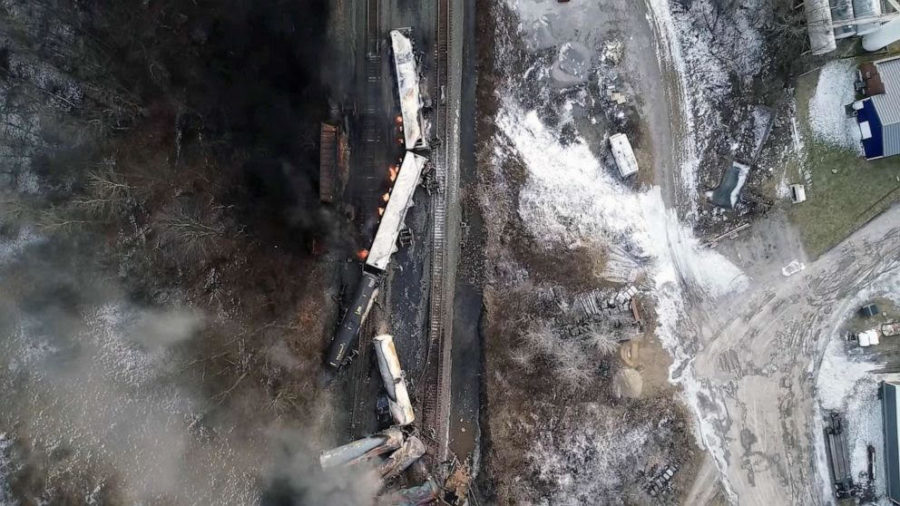Ohio Train Derailment
A derailed Norfolk Southern freight train carrying vinyl chloride – a highly volatile chemical –released the chemical into nearby environments, causing negative impacts. There were more than 43,000 animal deaths and 3,500 fish deaths in waterways. Norfolk Southern, ordered by the Environmental Protection Agency (EPA), is taking responsibility for cleaning the toxic soil and water.
To keep safe from a cloud of smoke and a possible explosion, authorities instructed about 2,000 Palestine residents to evacuate. Buildings and roads were closed. The order was then extended to include parts of Pennsylvania. After five days, on February 8, the evacuation order was lifted. The residents were allowed to return after the air quality was back to normal. Residents claimed to have experienced headaches and rashes. The air still had an odor.
On February 3 – while traveling from Ohio to PA – the train derailed in East Palestine, which is about 50 miles northwest of Pittsburgh. 38 out of 150 cars derailed. Another 12 cars were damaged by the hazardous chemicals and flammable material that the train was transporting. The derailment – according to the National Transportation Safety Board’s preliminary report – was caused by an overheated wheel bearing.
The overheated bearing triggered an alarm, to which the train engineer applied the brakes and stopped the train. When the crew went to inspect the damage, they saw fire and smoke which indicated the derailment. Jennifer Homendy, the chair of the National Transportation Safety Board, told CNN “there is no evidence the train’s crew ‘did anything wrong.’”
Along the railroad lines, hot-box detectors are placed to sense increasing temperatures. Three of these detectors recorded the increasing temperatures of the train’s wheels. The first temperature recording was 38 degrees Fahrenheit above the ambient temperature. The second recording was 103 degrees above, and the third was 253 degrees above. The alarm rang only after the third recording.
This is a video containing surveillance footage of the train on fire 20 miles before the alarm. This caused doubt about the spacing of hot-box detectors and the set temperature that triggers the alarm.








